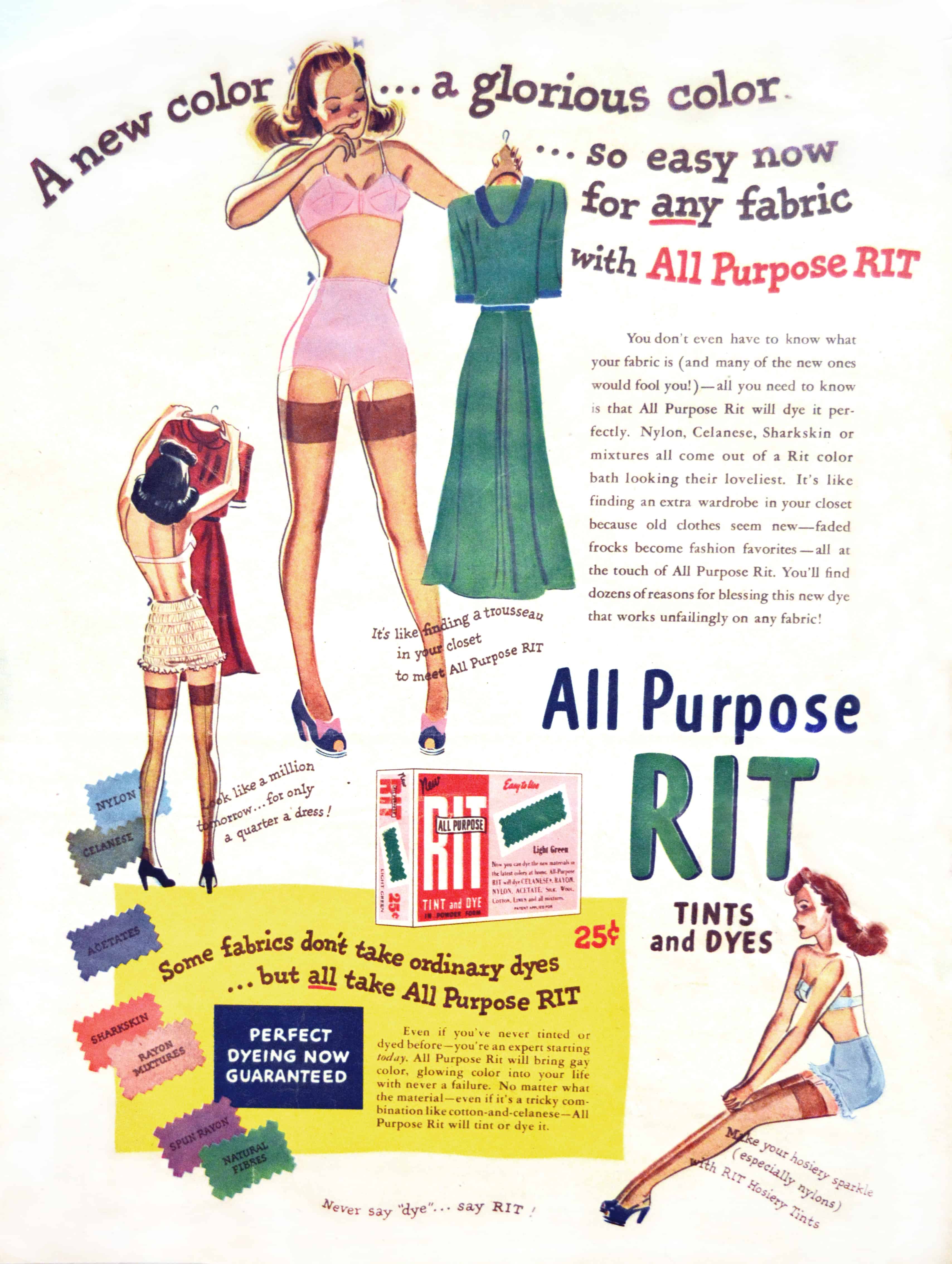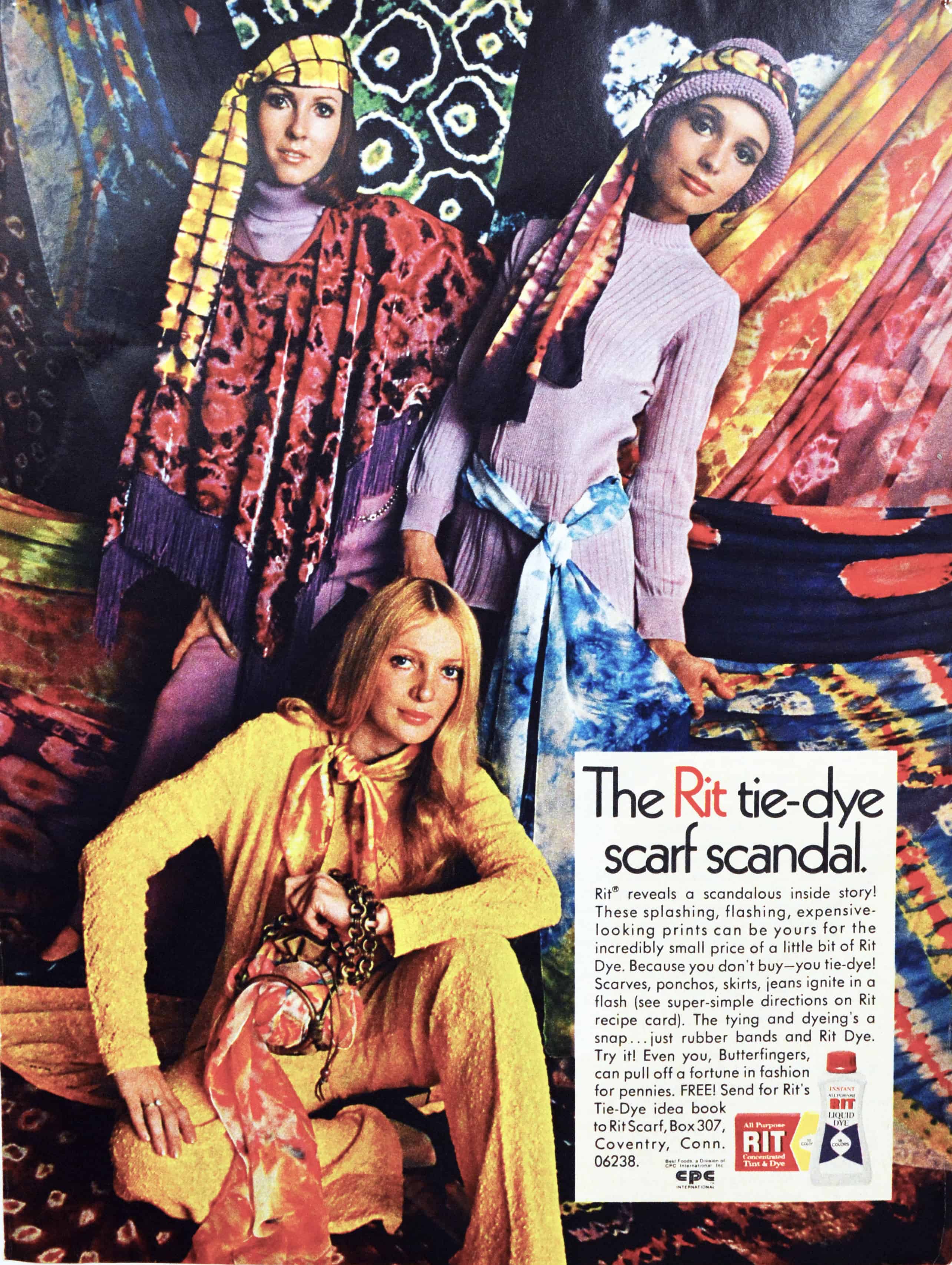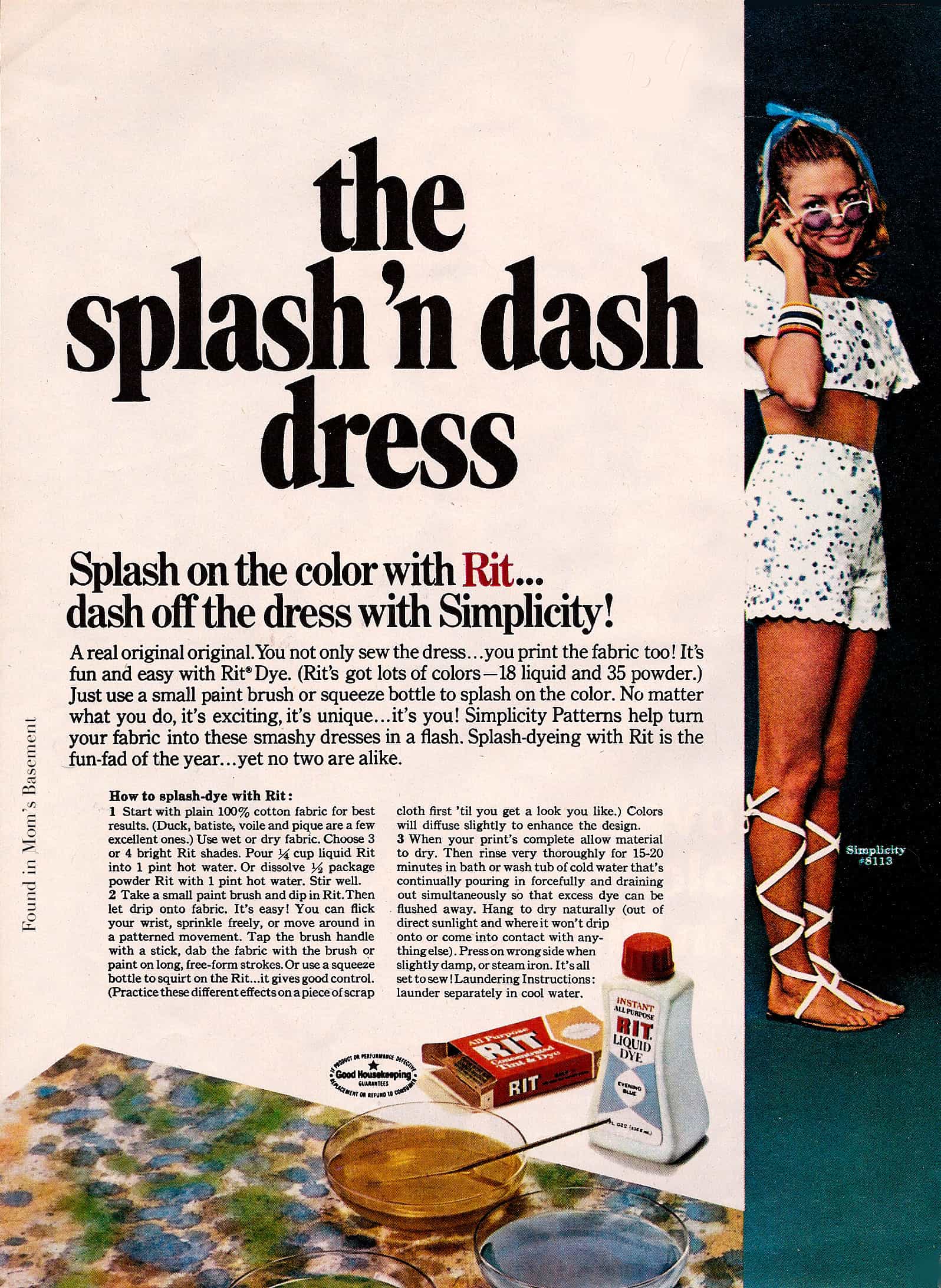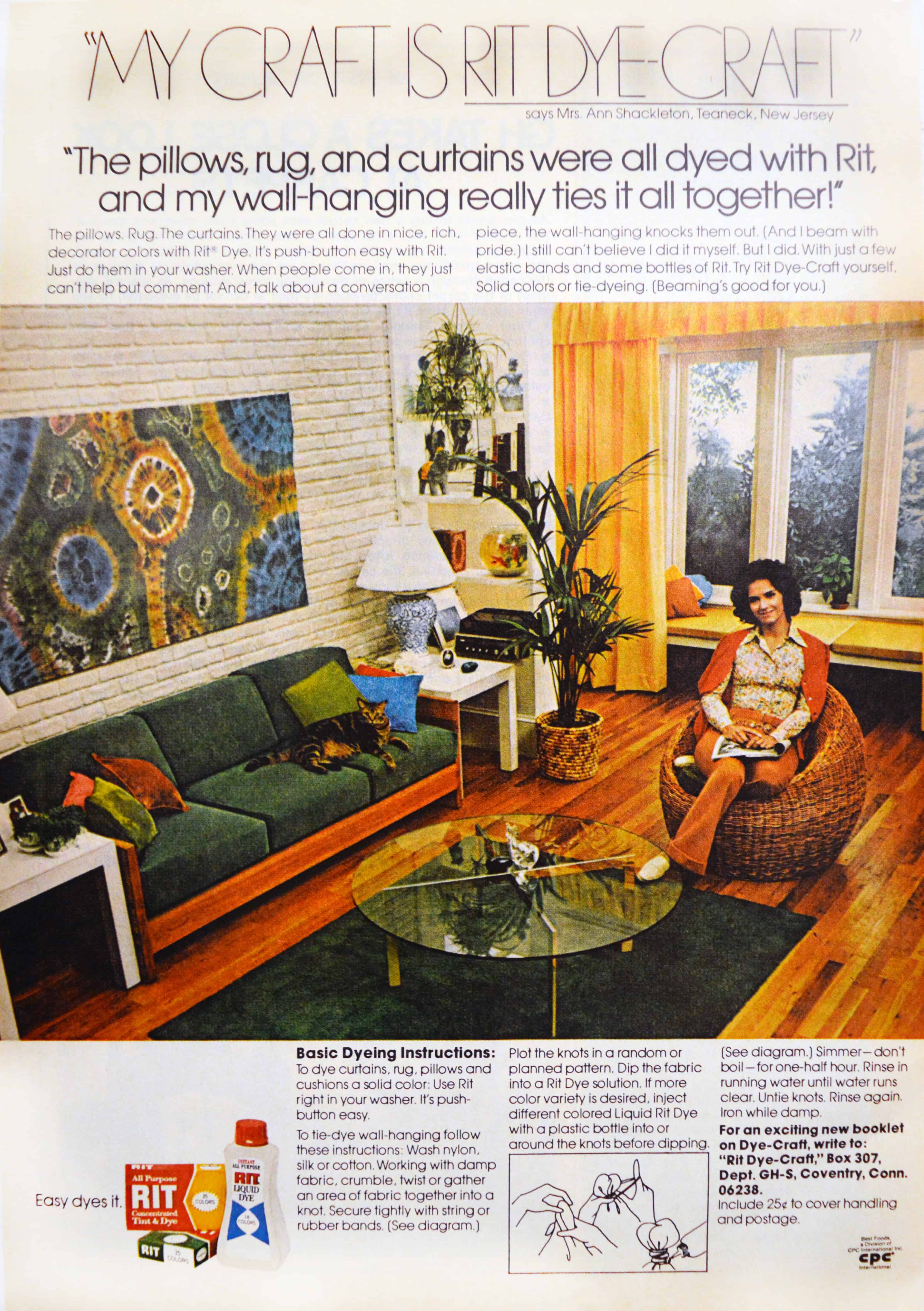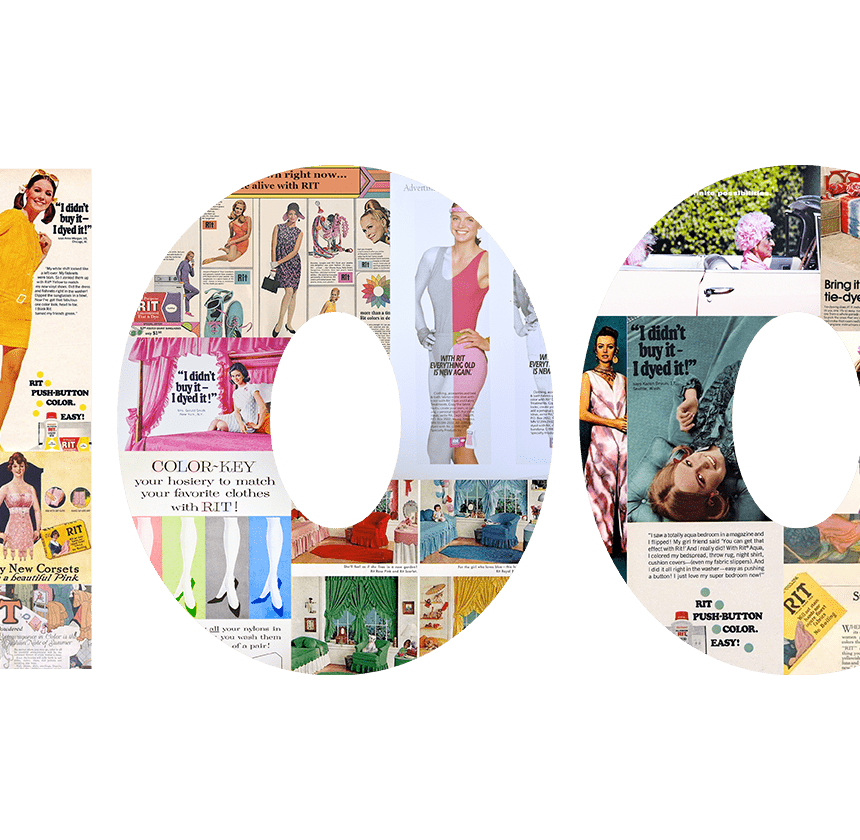1918
Shortly before World War I, entrepreneur Charles Huffman began experimenting with fabric dyes for use in the home. His timing was fortuitous as America had just got cut off from its primary source of dyes — Germany. Huffman named his new product Rit in honor of a friend, Louis L. Rittenhouse, who helped the new company financially and became its first vice president. The trademark, Rit, and the slogan “Never Say ‘Dye’… Say Rit!” was registered.
1922
By 1922, Rit extended its production to Chicago, Jersey City, Los Angeles and Toronto, which enabled it to introduce a full color lineup. Colors included: Old Rose, Dark Blue, Orange, Purple, Dark Grey, Orchid, Light Green, Peach, Black, Pink, Coral, Dark Brown, Rose Pink, Light Blue, Yellow, Ecru, Navy Blue, Light Grey, Dark Green, Golden Brown, Emerald Green and Scarlet.
1941
All-Purpose Rit was introduced. This was a particularly valuable development because synthetic fabrics were beginning to come on the market and the dyes which had been successfully used on natural fabrics (like wool, cotton, linen and silk) did not work effectively with synthetics, like nylon and rayon. All-Purpose Rit was developed to work on these fabrics and was credited with pulling the whole dye business out of a slump.
1952
The introduction of the automatic washing machine after World War II made it feasible to dye large objects, such as bedspreads, drapes and rugs at home. For this purpose, larger sized packages of All-Purpose Rit were introduced. The phrase “Push Button Color” was developed to demonstrate Rit’s ease of use when used in a washing machine.
1964
Don Price, a marketer at Rit, saw an opportunity to introduce the brand to some creative types he’d located in Greenwich Village. He advised Rit to replace its boxed powders with squeezable liquid dyes, better for creating multicolor designs. And when he heard about Woodstock, he funded artists to make several hundred tie-dye T-shirts to be sold at the festival. Rit became the official hippie dye. The arrival of a generation of young people interested in psychedelic patterns provided Rit with a great new target market.
1970s
Tie-dye far outlasted the Summer of Love. Rit ushered the look into high fashion, encouraging designers to incorporate tie-dye fabrics by Rit-approved artists Will and Eileen Richardson into their collections. Model Marisa Berenson posed in a tie-dyed kaftan by Halston in Vogue in 1970, and Ali McGraw was spotted in a tie-dye blouse while walking down Fifth Avenue the following year. Soon, kids were hosting tie-dye parties in suburban backyards across America.
2015
With the incredible growth in popularity of polyester, polyester cotton blends, acrylic and acetate, Rit needed a new dye to work on these fabrics and materials. Rit DyeMore for Synthetics was developed and launched with an initial 12 shades. Rit was now able to dye synthetics, which included not just clothing, but also plastics like 3D printed objects and lacrosse heads.
Explore Our History in Ads


